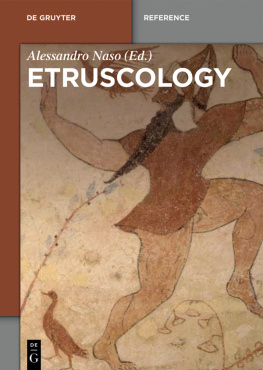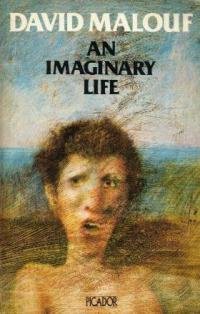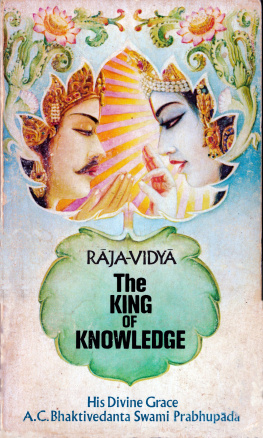Naso - Etruscology
Here you can read online Naso - Etruscology full text of the book (entire story) in english for free. Download pdf and epub, get meaning, cover and reviews about this ebook. City: Boston, year: 2017, publisher: De Gruyter, genre: Religion. Description of the work, (preface) as well as reviews are available. Best literature library LitArk.com created for fans of good reading and offers a wide selection of genres:
Romance novel
Science fiction
Adventure
Detective
Science
History
Home and family
Prose
Art
Politics
Computer
Non-fiction
Religion
Business
Children
Humor
Choose a favorite category and find really read worthwhile books. Enjoy immersion in the world of imagination, feel the emotions of the characters or learn something new for yourself, make an fascinating discovery.
- Book:Etruscology
- Author:
- Publisher:De Gruyter
- Genre:
- Year:2017
- City:Boston
- Rating:3 / 5
- Favourites:Add to favourites
- Your mark:
- 60
- 1
- 2
- 3
- 4
- 5
Etruscology: summary, description and annotation
We offer to read an annotation, description, summary or preface (depends on what the author of the book "Etruscology" wrote himself). If you haven't found the necessary information about the book — write in the comments, we will try to find it.
Etruscology — read online for free the complete book (whole text) full work
Below is the text of the book, divided by pages. System saving the place of the last page read, allows you to conveniently read the book "Etruscology" online for free, without having to search again every time where you left off. Put a bookmark, and you can go to the page where you finished reading at any time.
Font size:
Interval:
Bookmark:


ISBN 978-1-934078-48-8
(PDF) 978-1-934078-49-5
(ePub) 978-1-61451-910-2
Library of Congress Cataloging-in-Publication Data
A CIP catalog record for this book has been applied for at the Library of Congress.
Bibliographic information published by the Deutsche Nationalbibliothek
The Deutsche Nationalbibliothek lists this publication in the Deutsche Nationalbibliografie; detailed bibliographic data are available from the Internet at http://dnb.dnb.de.
2017 Walter de Gruyter Inc., Boston/Berlin
Cover image: Fresco from the tomb of the Augurs, Tarquinia: Running Phersu (masked man) on the left wall. Ca. 520 BCE; Photo: Courtesy DAI-Rome
www.degruyter.com
Alessandro Naso
The only reasonable solution is to dismember the [computer] manuals, study them for six months under the guidance of an Etruscologist, condense them into four file cards (which will be enough), and throw the originals away.
U. Eco, How to Follow Instructions (1994, 141)
Although the Etruscans are the third ancient civilization in western Europe after Greece and Rome, in contemporary culture they are almost a synonym for mystery, and Etruscologists are thought to be able to solve mysteriesas Umberto Eco ironically confirms. Its publication increased the fascination with the Etruscans in the eighteenth century and spawned Etruscheria (Etruscomania), the amateur passion for them.
Interest in the mysterious Etruscans in the following years suffered long breaks, interrupted by important archaeological discoveries, such as the temple and statues found at Veii from 1914 onward, which helped arouse interest and establish modern Etruscan studies. Modern Etruscan studies are closely connected with the name of Massimo Pallottino (19091995), who held the Chair of Etruscology at the University of Rome La Sapienza from 1942 to 1980 and founded Etruscology as a modern scientific discipline. He was the acknowledged authority in studies of pre-Roman Italy not only in his own country but all over the world, founding and leading a summer school in Etruscology and Italic studies reserved for non-Italian scholars at the University for Foreigners of Perugia. In Pallottinos view, Etruscology and Etruscologists study every aspect of Etruscan cultureas Egyptology and Egyptologists do for Egyptian cultureliteracy tradition, inscriptions, art, archaeology, and so on, which are used to construct a general historical framework. The Etruscologist is mostly a historian. Pallottino expressed his thoughts in a major work, Etruscologia , which was firstly published in 1942 by the established Italian publisher Hoepli, famous for its series of handbooks. Over the next four decades, the book underwent six new editions, each one systematically revised by the author, which made it the standard work on the subject. The best way to satisfy the universal interest in the mysterious Etruscans is an exhaustive book covering them in English.
Several general books on Etruscans, including the first dictionary, have recently been published in English and confirm that large publishing projects are still a very
Other institutions focusing on the Etruscans may be mentioned, such as the Istituto di Studi sul Mediterraneo Antico of the Consiglio Nazionale delle Ricerche (Rome) and the Unite Mixte de Recherche Archeologie et Philologie dOrient et dOccident supported by the Centre National de la Recherche Scientifique and the Ecole Normale Superieure (Paris). The leading institution in Etruscan studies, the Istituto Nazionale di Studi Etruschi e Italici , founded in 1925 in Florence, which has published the journal Studi Etruschi since 1927, organizes scientific symposia, and includes sections in Austria, France, Germany, and the United States.
This wide range of scientific activity allows us to conclude that the Etruscans may be mysterious primarily for publishers and readers, both of whom love mysteries.
If Pallottino as founder of modern Etruscology and his immediate pupils formed respectively the first and second academic generations of Etruscologists, the scholars on duty in this bookincluding the present editor and most of its authorsare the third and fourth generations, with some second generation exceptions. The aim of such a balanced mixture between innovation and tradition is an up-to-date and reliable handbook. The choice of author for each contribution followed three distinct principles. First, several Etruscologists have been asked to deal with subjects that are quite new for them, to augment their interest and to avoid routine chapters. Second, some scholars have been invited to contribute to this book even though they were not specifically interested in Etruscan subjects, because they have new approaches and bring new light to old questions. Third, some very technical subjects in need of vast direct experience could only be treated by a few scholars. In such cases an editor has no real choice, as is shown by comparing the tables of contents of the above-mentioned general books and the present one: often the same author deals with the same theme in several places.
This handbook is in two main parts: critical reviews of methods and main issues (part 1), and syntheses of history, civilization, the landscape of Etruria, and Etruscans outside Etruria (part 2).
) is devoted entirely to methodology in the history of Etruscology, from the question of the origin of the Etruscans to images of the Etruscans in Greek and Latin literature, from the earliest phases of the discipline to modern interpretations of art and iconology, including recent research on DNA analysis. The study of the Etruscan language, known exclusively through ancient inscriptions, has always had a special role and therefore needs a special treatment of its methodology.
Issues offers a combination of major subjects typical of any important ancient civilization along with some areas where Etruscans were preeminent in the ancient world (section II, ). The issues discussed include three thematic divisions, devoted to politics and society (political organization and magistrates, economy and trade, war, society, wine culture, banqueting and food, sports, dance, alphabets and language), religion (religion, death and burial, haruspicy, prophecy and divination), and finally technology (ships and shipping, harbors, vehicles and roads, mines and metalworking, the mines on the island of Elba, coins and mints, weights and balances, textiles and dress, musical instruments, gold dental appliances). Such issues are not particularly new for Etruscologists, but it is new to have all of them together in one place. The present volume aims to be systematic, but some aspects are missing. Current knowledge of certain subjects, such as the Etruscan system of measures and demography, seem to be too limited to provide an exhaustive overview.
The third section, dedicated to history, opens the second part of this book. Etruscan civilization corresponds to the first millennium BCE and has been divided schematically into five main periods (all dates earlier than the first century mentioned in this volume are assumed to be BCE unless otherwise marked):
1.Early Iron Age, 10th cent.730
2.Orientalizing period, 730580
Font size:
Interval:
Bookmark:
Similar books «Etruscology»
Look at similar books to Etruscology. We have selected literature similar in name and meaning in the hope of providing readers with more options to find new, interesting, not yet read works.
Discussion, reviews of the book Etruscology and just readers' own opinions. Leave your comments, write what you think about the work, its meaning or the main characters. Specify what exactly you liked and what you didn't like, and why you think so.






